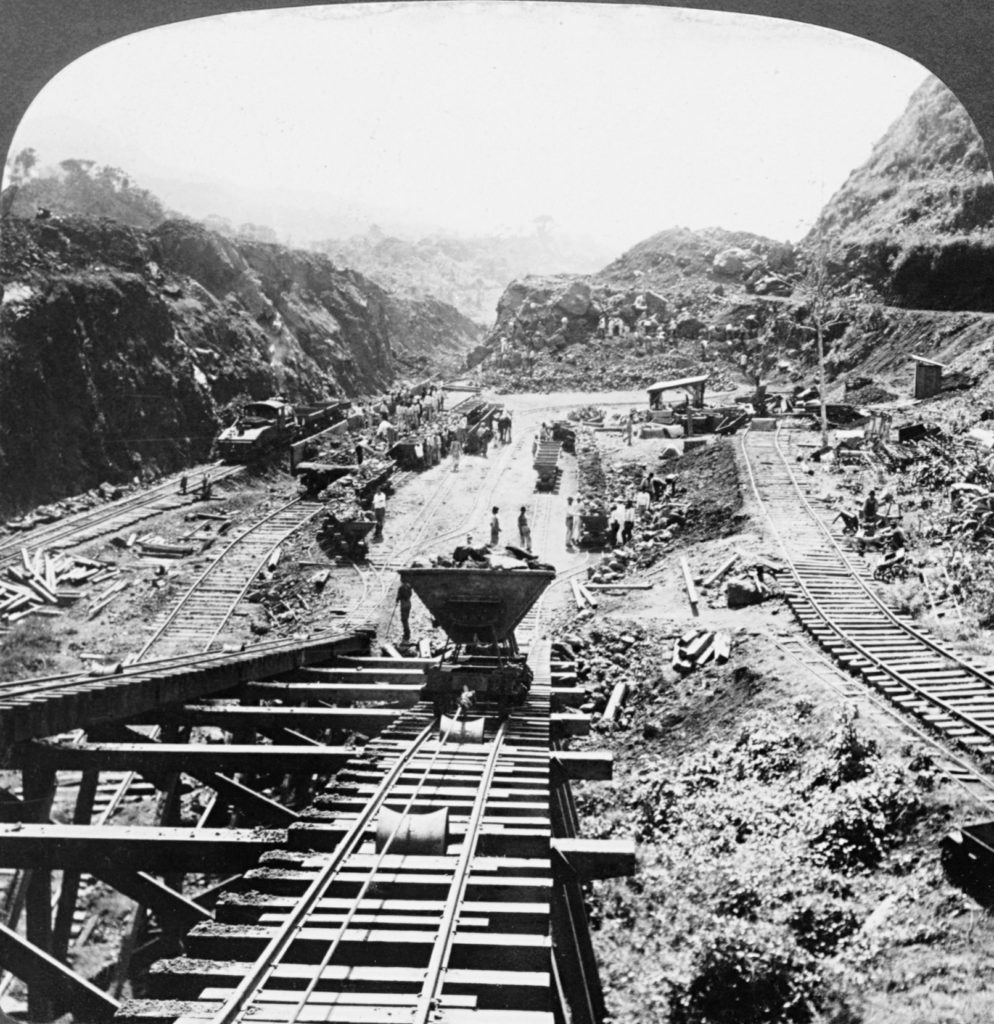May 1 — May 15, 2022
History Matters
Showing our children that their past is prelude to their future
In the last decades of the 19th century, French engineers tried to hitch up the Atlantic and the Pacific oceans; on paper it looked easy: just dig a channel between the ten miles of land in Central America that separated them.
But it wasn’t that easy. And so, on May 4, 1905, the U.S. attempted it:
As History.com explains: “The Americans avoided the mistakes that had doomed the French project. Engineers used dams to create an inland lake, connected to the oceans by locks, rather than building a sea-level canal all the way across the isthmus.” It took almost 10 years, but the venture was completed in October of 1913; ten months later, the Panama Canal opened for commerce.
For a good, fact-filled read, the Grateful American Book Prize recommends The Path Between the Seas: The Creation of the Panama Canal by David McCullough.

George Washington and his soldiers were not the first American revolutionaries. On May 7, 1763, Pontiac, the Chief of the Ottawa nation of native Americans, gathered a force that girded his Ottawas, Wyandot, Ojibwa, and Potawatomi tribes, and stormed the British forces in Detroit.
According to the curator of the Citizen Potawatomi Nation’s Cultural Heritage Center, “Pontiac was an Ottawa warrior and leader who fought during the French and Indian War, gaining recognition as a member of an intertribal confederacy to repel British control and settlement in the Great Lakes,” says Blake Norton, the curator of the Citizen Potawatomi Nation’s Cultural Heritage Center.
History.com says that a year earlier Pontiac “enlisted support from every tribe from Lake Superior to the lower Mississippi for a joint campaign to expel the British from the formerly French-occupied lands. According to Pontiac’s plan, each tribe would seize the nearest fort and then join forces to wipe out the undefended settlements … In April, Pontiac convened a war council on the banks of the Ecorse River near Detroit. It was decided that Pontiac and his warriors would gain access to the British fort at Detroit under the pretense of negotiating a peace treaty, giving them an opportunity to seize forcibly the arsenal there.”
The Grateful American Book Prize recommends Pontiac’s War: Its Causes, Course and Consequences by Richard Middleton.

On May 8, 1945, America and its allies held a raucous V-E Day, celebrating the Victory over Europe – the defeat of the Nazi war machine–which had terrified Europe. But that was just part one of the War’s end. It would be another three months before the Imperial forces of Japan surrendered–and brought peace–to the world after six years of unrelenting conflict.
History.com says “The eighth of May spelled the day when German troops throughout Europe finally laid down their arms: In Prague, Germans surrendered to their Soviet antagonists, after the latter had lost more than 8,000 soldiers, and the Germans considerably more; in Copenhagen and Oslo; at Karlshorst, near Berlin; in northern Latvia; on the Channel Island of Sark—the German surrender was realized in a final cease-fire.”
The Grateful American Book Prize recommends Anne Frank: The Diary of a Young Girl by Anne Frank and Otto H. Frank.

History Matters is a biweekly feature courtesy of The Grateful American Book Prize.




